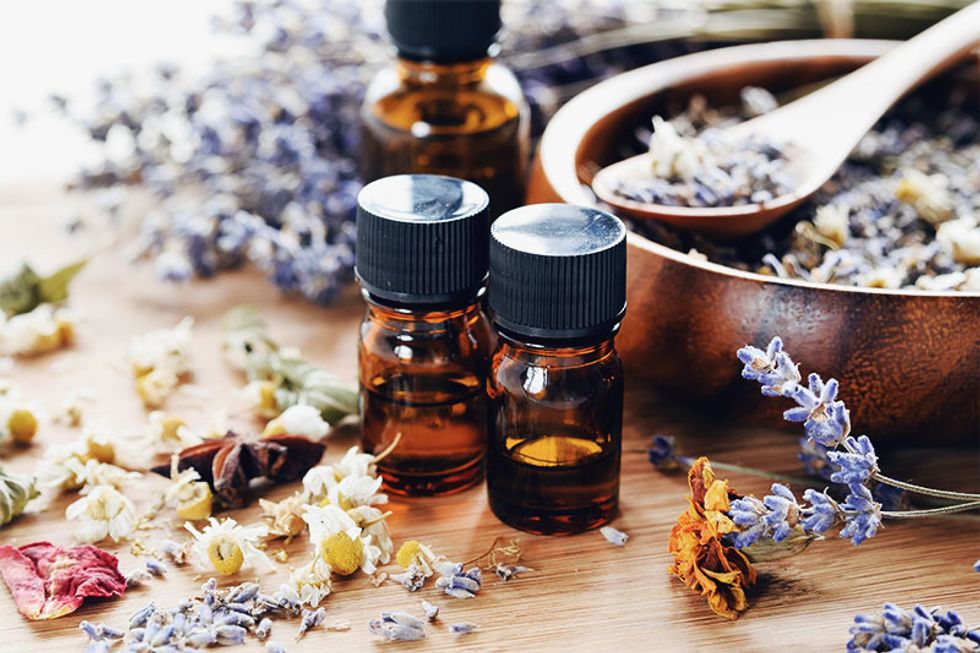If you have been using essential oils for any amount of time, you probably have heard of the term "layering". You may also be aware that while essential oils are most frequently used individually, you can also create and purchase blends of 2 or more oils. Are blending and layering the same thing? If not, how are they different? If they are different, which process delivers the most benefits?
Layering is simply a process of applying one oil on top of another. You may apply one or 2 drops of cypress oil to a sprained ankle and allow it to absorb. This is great for slowing down swelling, and also for improving your circulation. After that oil has been absorbed into your skin, you can follow with 1 to 2 drops of basil, which is an excellent treatment for muscle injuries.
You then continue to layer lemongrass (for repairing ligaments and joints), wintergreen (for treating bone problems) and valor oil (for reducing bruising). This is a common process for treating sprains. In each case and each stage of layering, you allow one essential oil to be totally absorbed before layering the next one on top.
Blending Is Not Layering, But You Can Layer with Blends
Blending is a very exact process. It is best left to professionals in most cases. A blend is nothing more than 2 or more essential oils blended and mixed together. When layering one oil on top of another, you can use essential oil blends. Just note that blending and layering are 2 entirely different aromatherapy procedures.
Does Layering Offer the Most Health Benefits?
Whether you apply a blend, a single essential oil or layer several oils, you are going to receive different types of benefits. No one process is "better" than the other. A simple bee sting can be treated quite effectively with 1 or 2 drops of lavender oil. In most cases layering is not needed, nor is an essential oil blend.
It is vital though that you use high-quality essential oil brands because if you don't you won't get any health benefits irrespectively if you blend or layer.
However, as in the above example (a sprained wrist or ankle), layering is used to treat multiple symptoms. And in some cases, a blend created by a recognized essential oils retailer is the best option. You have 3 different applications for treating different issues.
When To Blend, Layer or Use a Single Oil
Layering can be so effective because of the powerful nature of essential oils. Usually, a period of time from 5 to 10 minutes between layering oils is enough to let the oil absorb into your skin. There are popular essential oil manufacturers that make very effective blends for several common situations. And for the majority of daily use, single oil applications will be fine. So, when do you choose one method over another?
The answer comes in turning to your personal experiences. Purchase an essential oils guide or book. Join aromatherapy chat rooms and forums online, as well as off-line communities and groups. Over time your personal use of essential oils, combined with the good knowledge you receive from like-minded individuals, will ensure that you choose the appropriate type of essential oils application every time.
















